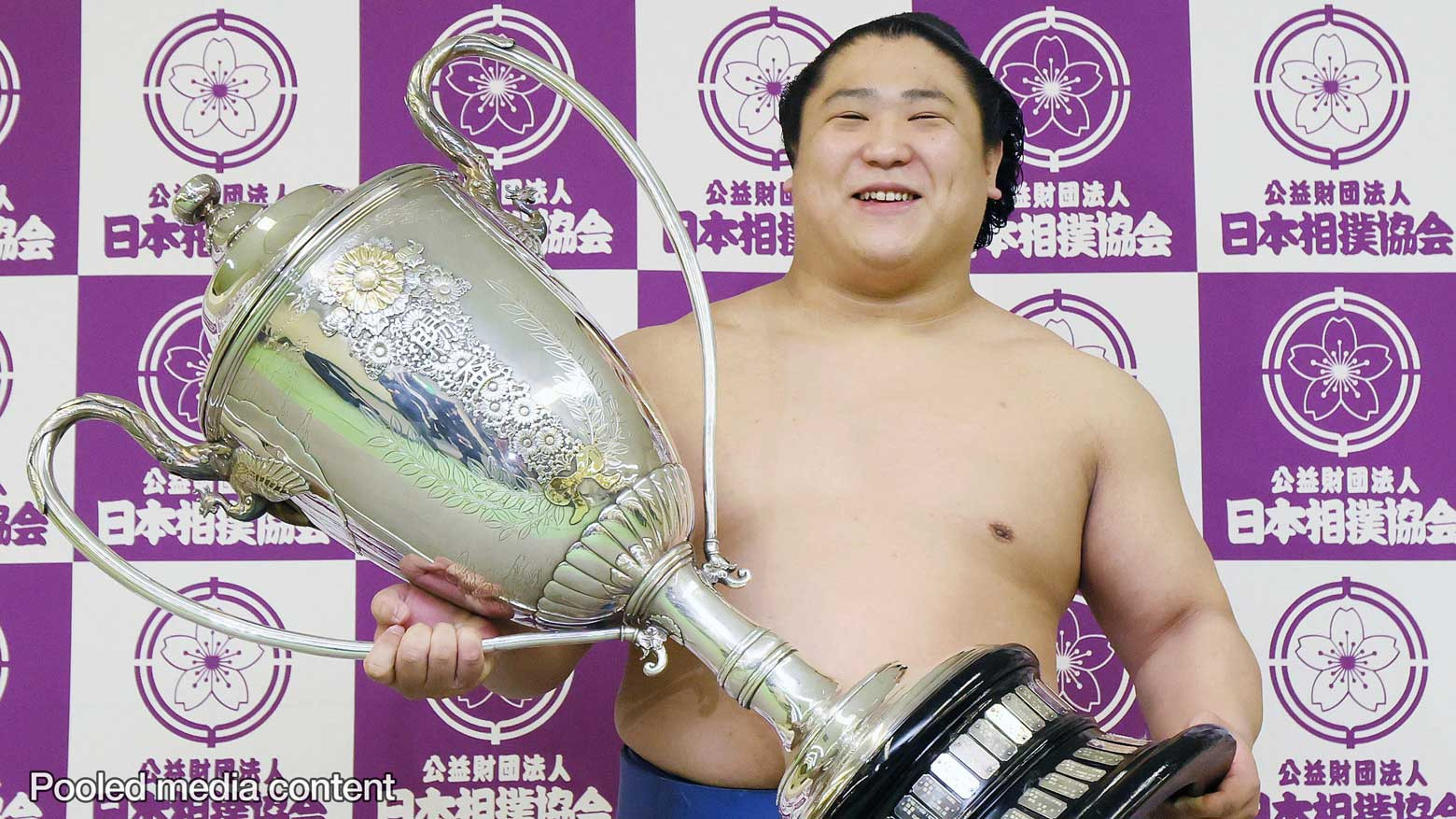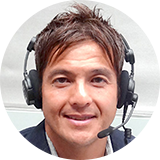A welcome return to Osaka
Anticipation was sky high. The spring tournament was returning to Osaka after taking place in Tokyo last year due to the coronavirus pandemic. What's more, sumo fans were allowed into Osaka Prefectural Gymnasium for the first time in three years.
There had been serious doubts about whether the basho could even go ahead in the city. In early February, the sumo association revealed that 252 members were infected with the coronavirus. Thankfully, the situation improved quickly.
And there was an added bonus. The nationwide drop in cases prompted the association to raise the spectator cap to 75 percent of arena capacity, up from 50 percent. That meant a maximum of about 5,600 fans could watch the action each day. Those who grabbed a ticket were surely thrilled to be back in the stands.
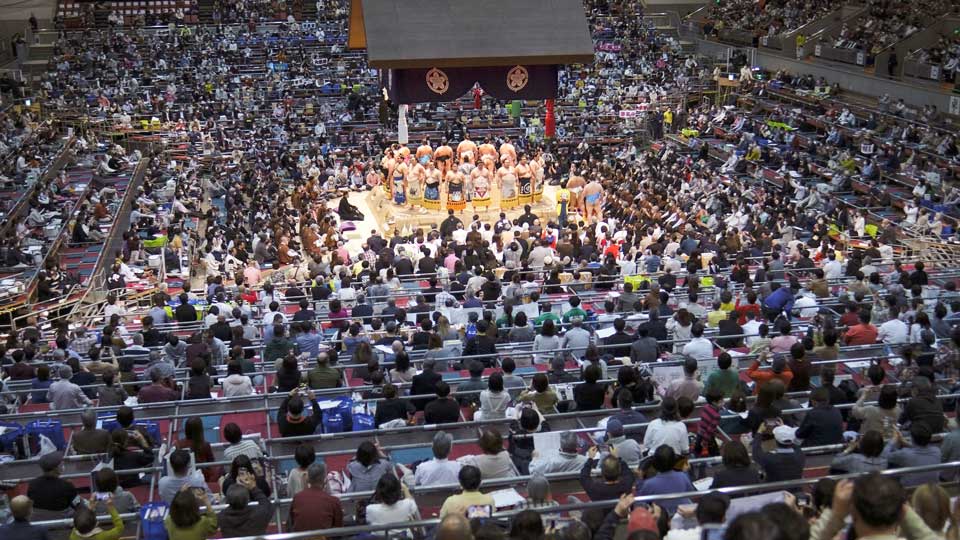
Lone yokozuna makes early exit
Terunofuji, currently sumo's only yokozuna, was the favorite for the title despite being struck with the coronavirus in early February. The 30-year-old was looking to redeem himself after underperforming in the January tournament, but pulled out on Day 6 in Osaka, citing injuries to his right heel and left knee.
Terunofuji's infection severely hampered his preparations. The yokozuna's stable master said his prize fighter was nowhere near top form after missing training for 10 straight days. Let's hope he comes back strong in summer.
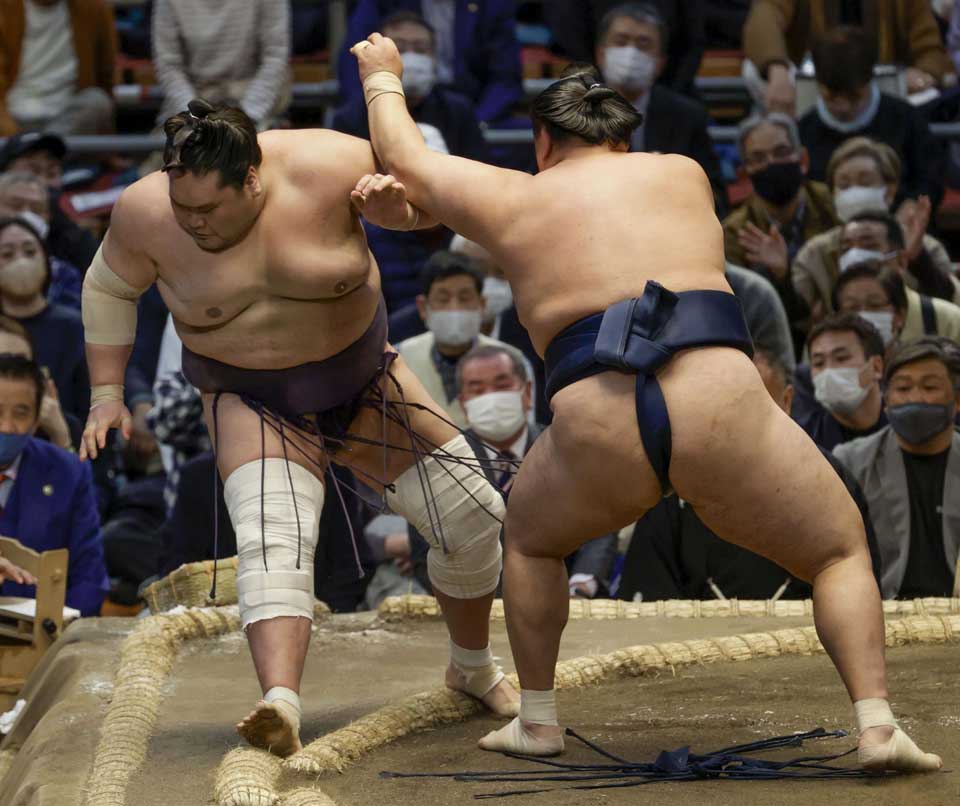
Ex-ozeki and new sekiwake fight for the title
Rank-and-file wrestler Takayasu capitalized on the yokozuna's absence. The maegashira once had the second-highest rank of ozeki and, by Day 5, was in the blazing form of old – unbeaten and in sole possession of the lead.
Takayasu stayed ahead of the pack until Day 11, when he faced off against Wakatakakage, who was debuting at the third-highest rank of sekiwake. He too was performing well, with just one loss.
Their bout had the fans roaring. In the end, Wakatakakage overwhelmed Takayasu with a speedy and aggressive attack. The win put them into a two-way race for the cup, with four days to go.
Both wrestlers suffered another loss, meaning their records were still equal on the final day. Takayasu fought first, but suffered his third defeat. All eyes were on Wakatakakage, who faced off against ozeki Shodai. The sekiwake fiercely went for his opponent from the onset, but the higher-ranked wrestler found a nice inside position, from where he drove his opponent over the bales.
It meant only one thing: a playoff for the title between Wakatakakage and Takayasu, both tied on 12 wins and 3 losses.
Takayasu went for it, charging in with a relentless pushing and thrusting offense. But Wakatakakage endured, miraculously grabbing hold of Takayasu's belt at the edge of the ring. He swung his opponent out – making the match, tournament and title his own.
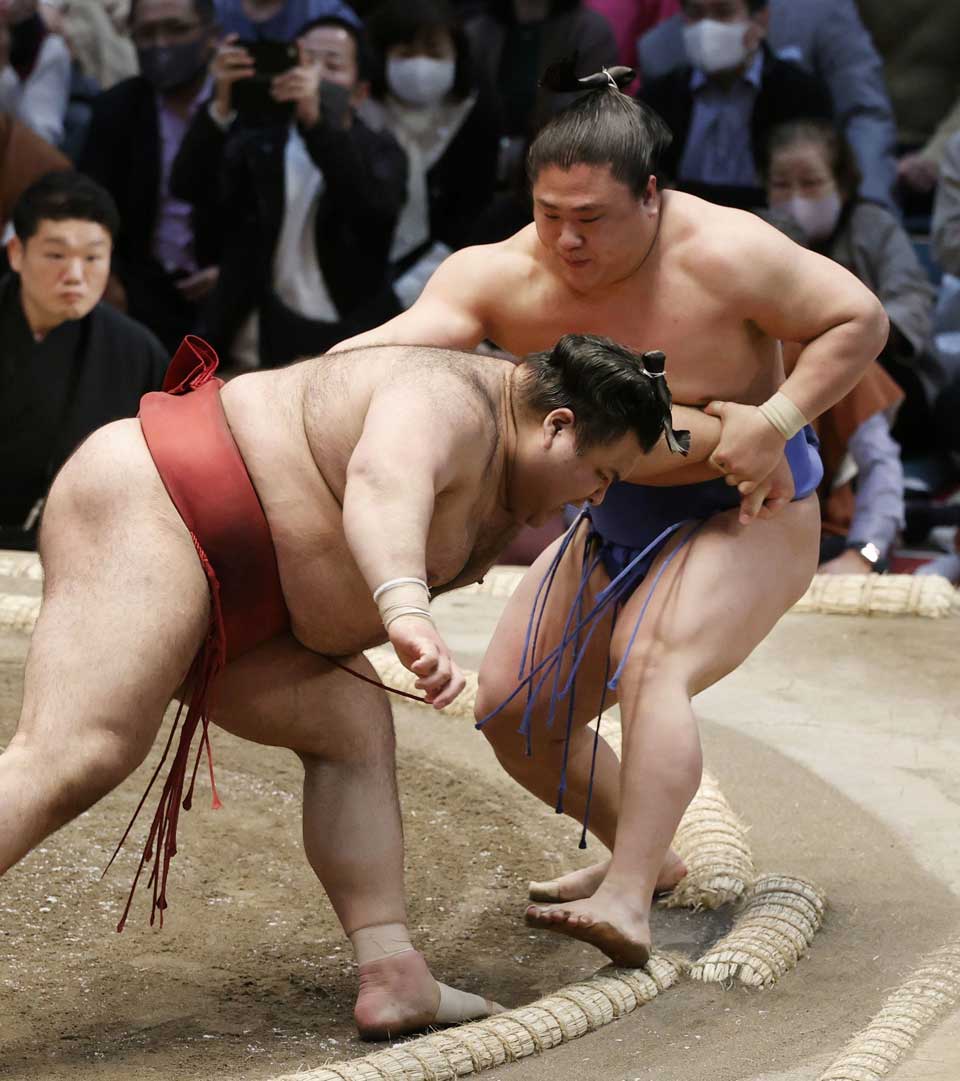
It was Wakatakakage's first Emperor's Cup, and the first for a newly promoted sekiwake in 86 years. The feat was last accomplished by the legendary Futabayama in 1936.
Wakatakakage is also the first man from Fukushima Prefecture in northeastern Japan to win a top division title in 50 years. In his victory speech, the 27-year-old paid tribute to the region, which was devastated by a massive earthquake and tsunami in March 2011.
"The reconstruction of Fukushima still has a long way to go, 11 years after the disaster. I want to play my part by giving it my all in the ring." Congratulations, Wakatakakage.
And commiserations, Takayasu. He has come so close to winning the championship so many times, but once again missed out. "I accept the result, because I gave everything I had," he said before leaving the arena. "I'll come back stronger, and go for the title once again."
Personally, it's good to know Takayasu's fighting spirit remains as strong as ever. I really hope he realizes his dream in the near future. He deserves it, and definitely has what it takes.
New ozeki makes his presence felt
Expectations were high for Mitakeumi, who rose to the rank of ozeki after winning the New Year Tournament in January. The 29-year-old may not have won this time, but he didn't disappoint either – staying in contention until the latter days of the tournament. In the end, he finished with a respectable 11 wins and 4 losses.
Mitakeumi says competing with consistency and winning more than 10 bouts per tournament are a must for ozeki wrestlers. Job done this time, and I'll happily give him a thumbs up for his efforts.
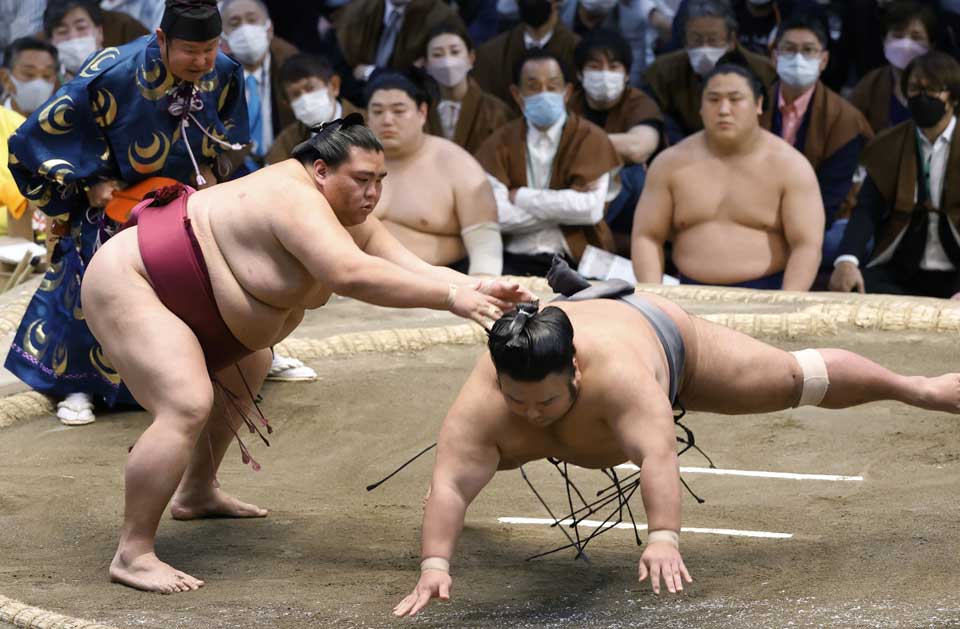
Incidentally, March champ Wakatakakage and Mitakeumi both attended Toyo University before turning pro. Mitakeumi is the senior of the two, and I'm sure he'll be inspired to see his buddy enjoying success.
Special prize winners
Only one man can win the Emperor's Cup, but there are other prizes handed out to fighters who compete at a high level.
This time, Takayasu won the Fighting Spirit Prize as a consolation for just losing out on the cup.
Kotonowaka earned the same award for keeping himself in the race until the final day.
In addition to the title, Wakatakakage won the Technique Prize for his superb skills.
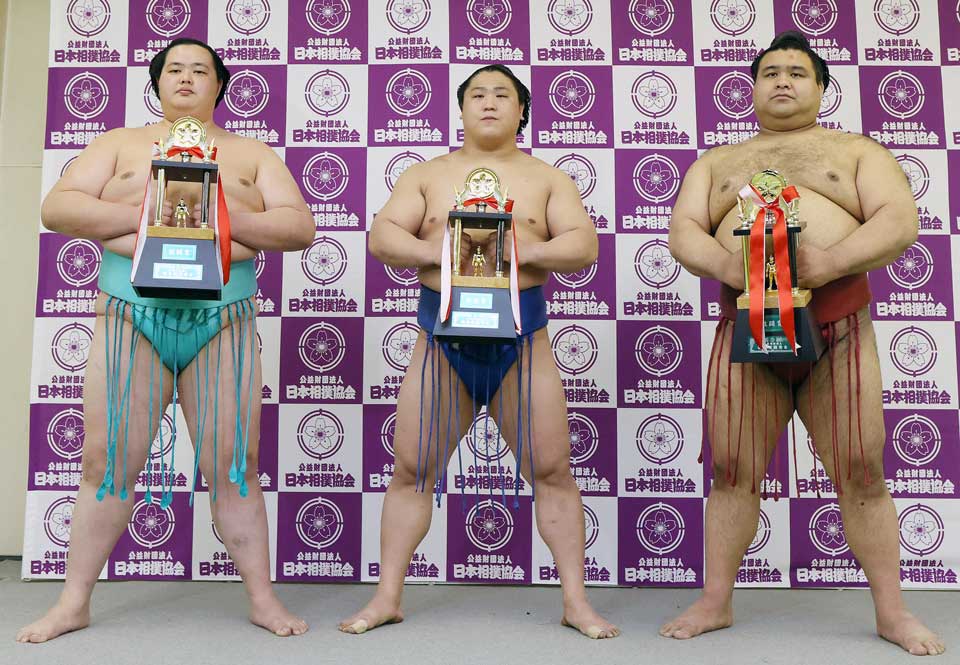
Next up: summer
The two tournaments so far this year have, unusually, been won by sekiwake-ranked wrestlers. In that sense, it will be nice to see the big boys return to form at the next basho in May.
In particular, Terunofuji will be chomping at the bit. As yokozuna, it's his job to show the rest who's boss.
And I'll be expecting an even stronger showing from Mitakeumi in his second tournament as an ozeki. Just short of age 30, he has no time to waste if he wants to become a grand champ.
Mitakeumi's fellow ozeki wrestlers – Shodai and Takakeisho – will need to improve dramatically. Both finished the March tournament with the eight wins needed to keep their rank. At the same time, they were nowhere to be seen at the half-way point of the title race.
Shodai started appallingly with 4 straight losses, but he regrouped to finish with 9 wins. Takakeisho had 8 wins with four days to go, and it stayed that way until the end. Disappointing, to say the least. Both were a far cry from what is expected as an ozeki, and they need to improve, fast.
They may soon have extra company within their rank. Wakatakakage will be gunning for back-to-back titles in May. If he does it, the association will surely make him an ozeki. If he misses out on the cup, 12 wins or more could still see him promoted.
I'll finish off with a little about Hoshoryu – definitely a man to keep your eye on. At the tender age of 22, the Mongolian competed at the fourth-highest rank of komusubi in Osaka, finishing with 8 wins. He gets better and better every time he steps into the ring. I'm certain he'll raise the temperature in summer.
The May Grand Sumo Tournament kicks off May 8 at the Kokugikan arena in Tokyo.
